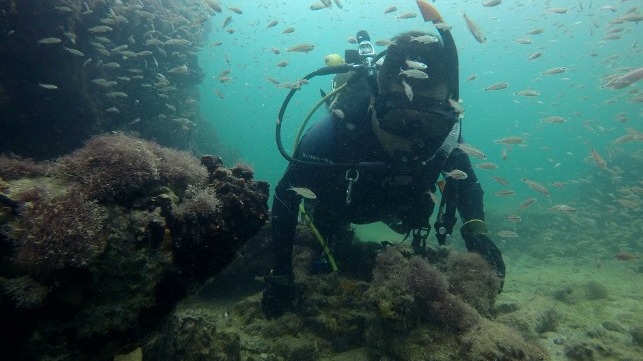Archaeologists Identify Steamship Used to Transport Enslaved Mayans

Researchers with Mexico's National Institute of Anthropology and History (INAH) have identified the first known wreck of a vessel used in the Mayan slave trade, the 19th-century human trafficking enterprise that saw indigenous people from the Yucatan sold into servitude on plantations in Cuba.
The identification of the remains of the paddlewheeler La Unión provides more evidence on the existence and persistence of that trade, which carried on for decades despite its formal illegality. The vessel went down off the port of Sisal in September 1861, about four months after a proclamation specifically banned the forced transportation of Mayan people.
With guidance from local residents in Sisal, archaeologists with INAS located the wreck site in 2017. It was apparent that the vessel was designed with first-generation steam paddlewheel propulsion technology, putting her date of construction in the range of 1837-1860. The boilers had exploded, and the wooden hull showed signs of burning. Much of the structure was well preserved, including the paddle wheels, the remains of the boilers and the copper fasteners used for hull construction.
After one season of diving the wreck, the team delved into the archives in Yucatan, Mexico City, Cuba and Spain. They gathered enough information to confirm that the wreck is indeed La Unión.
La Unión belonged to Havana-based Zangroniz Hermanos y Compañía, which was engaged in trading between Cuba and Mexico, serving the ports of Sisal, Campeche, Veracruz and Tampico. The vessel carried agricultural cargoes, paying passengers and Mayan people who were captured or deceived into making a one-way trip to Cuba. Between 1855 and 1861, Zangroniz Hermanos transported an average of about 25-30 Mayans to Cuba per month with La Unión and one additional vessel.
At the time of La Unión's operations, the Yucatan region was in the midst of a long insurrection known as the Caste War (1847 -1901). Combatants of Spanish descent would sometimes send Mayans who had been captured in the fight into servitude in Cuba, where they were in demand for the sugar plantations. The trade could be lucrative, according to INAH.
"Each slave was sold for up to 25 pesos to intermediaries, and they could resell them in Havana for up to 160 pesos [for men]," said INAH underwater archaeologist Helena Barba Meinecke in a statement.
